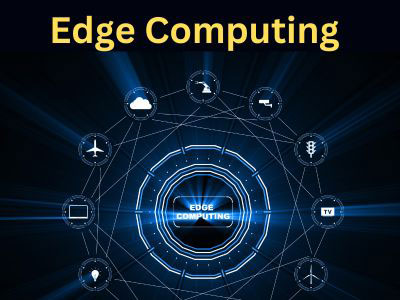Key Takeaway
Edge computing is predicted to grow significantly by 2025. Experts expect its adoption to accelerate in industries like healthcare, automotive, and smart cities.
With advancements in 5G and IoT, edge solutions will play a crucial role in enabling real-time decision-making and reducing dependency on centralized cloud systems.
Market Size and Growth Trends for Edge Computing
The edge computing market is experiencing rapid growth as industries recognize the potential benefits of processing data closer to the source. According to industry reports, the global edge computing market is expected to grow at a significant rate over the next several years, driven by the increasing adoption of IoT devices, the need for real-time data processing, and the growing demand for low-latency applications. Sectors such as manufacturing, healthcare, automotive, and smart cities are all leveraging edge computing to improve operational efficiency, enhance decision-making, and reduce latency.
One of the key drivers of this growth is the proliferation of IoT devices, which generate massive amounts of data that must be processed quickly and efficiently. As more businesses adopt IoT solutions, the need for edge computing to handle this data locally and in real time will continue to rise. Additionally, the roll-out of 5G networks is expected to accelerate the adoption of edge computing, as 5G offers higher bandwidth and lower latency, enabling even more applications to benefit from local data processing. As edge computing continues to mature, its market size will expand, offering new opportunities for innovation and transformation across industries.

Key Industries Driving Edge Adoption by 2025
Edge computing adoption is growing across several key industries, with manufacturing, healthcare, retail, and transportation leading the charge. By 2025, these sectors are expected to drive significant advancements in edge technologies to meet their unique operational needs.
In manufacturing, edge computing enables real-time monitoring of production lines and predictive maintenance of equipment. Healthcare is leveraging edge solutions for applications like remote patient monitoring and real-time diagnostics, ensuring faster and more efficient care delivery. Retailers use edge computing to improve in-store experiences through personalized recommendations and streamlined inventory management.
Transportation stands out as a transformative sector, with edge computing powering autonomous vehicles and smart traffic systems. These applications require ultra-low latency and real-time data processing, making edge computing an ideal fit.
For engineers, focusing on these industries provides an opportunity to work on cutting-edge projects that shape the future. Understanding sector-specific challenges and edge computing applications will be essential for driving innovation and adoption.
Emerging Technologies Impacting Edge Computing
Emerging technologies are significantly impacting edge computing by making it more powerful and efficient. Innovations like 5G networks are enhancing the connectivity and speed of edge devices, enabling more data to be processed at the edge with minimal latency. Additionally, advancements in AI and machine learning allow edge devices to perform more complex tasks locally, such as real-time data analysis and decision-making.
Other technologies like blockchain are improving security in edge computing by providing decentralized and immutable data storage. These innovations are shaping the future of edge computing and enabling more robust and efficient IoT solutions.
Innovations in Edge Devices and Infrastructure
Innovations in edge devices and infrastructure are central to the advancement of edge computing in IoT applications. As IoT continues to expand, the demand for more powerful, efficient, and flexible edge devices has skyrocketed. Modern edge devices are now capable of processing large volumes of data in real-time, closer to where the data is generated, thereby minimizing latency and reducing dependency on the cloud.
One of the most significant innovations in edge devices is the development of AI-enabled edge computing. By integrating machine learning algorithms directly into edge devices, it is now possible to perform complex data analysis locally. This enables devices to make real-time decisions without needing to communicate with the cloud, which is crucial for time-sensitive applications, such as autonomous vehicles and industrial automation.
Additionally, 5G technology is playing a vital role in enhancing edge device capabilities. With ultra-low latency and high-speed data transmission, 5G enables edge devices to handle larger amounts of data more effectively and in near-real-time, opening up new possibilities for applications that were previously impossible due to connectivity constraints.
The miniaturization of edge devices has also been a critical factor, allowing for smaller, more energy-efficient devices that can be deployed in a wider range of environments. Furthermore, edge computing infrastructure has evolved to include more distributed architectures, ensuring better scalability, redundancy, and fault tolerance.
With these innovations, edge computing has become a cornerstone for the next generation of IoT solutions, particularly in industries such as healthcare, automotive, and manufacturing, where real-time data processing and low latency are paramount.
Future Role of Edge in IoT and AI Integration
The future of edge computing will see a greater convergence between IoT and artificial intelligence (AI), making it possible for edge devices to perform increasingly complex tasks without needing to rely on cloud infrastructure. Edge devices equipped with AI models can analyze real-time data, detect anomalies, and make decisions on-site, all while reducing latency and minimizing the need for continuous cloud communication.
This integration will unlock new possibilities in industries like healthcare, where AI-powered edge devices can monitor patient health, detect critical changes in real-time, and even initiate treatment without waiting for cloud-based analysis. In smart cities, AI-enabled edge devices can improve traffic management, optimize energy usage, and enhance public safety by analyzing data directly at the edge.
Conclusion
In conclusion, by 2025, edge computing is expected to play an even more integral role in industries worldwide. With the rapid adoption of IoT devices and advancements in 5G networks, edge computing will enable faster and more efficient data processing, reducing reliance on centralized cloud systems.
Additionally, edge computing will support the growth of intelligent applications in areas such as smart cities, autonomous vehicles, and real-time analytics. By 2025, we will likely see broader edge computing deployments across diverse sectors, improving operational efficiency and enhancing the user experience.
